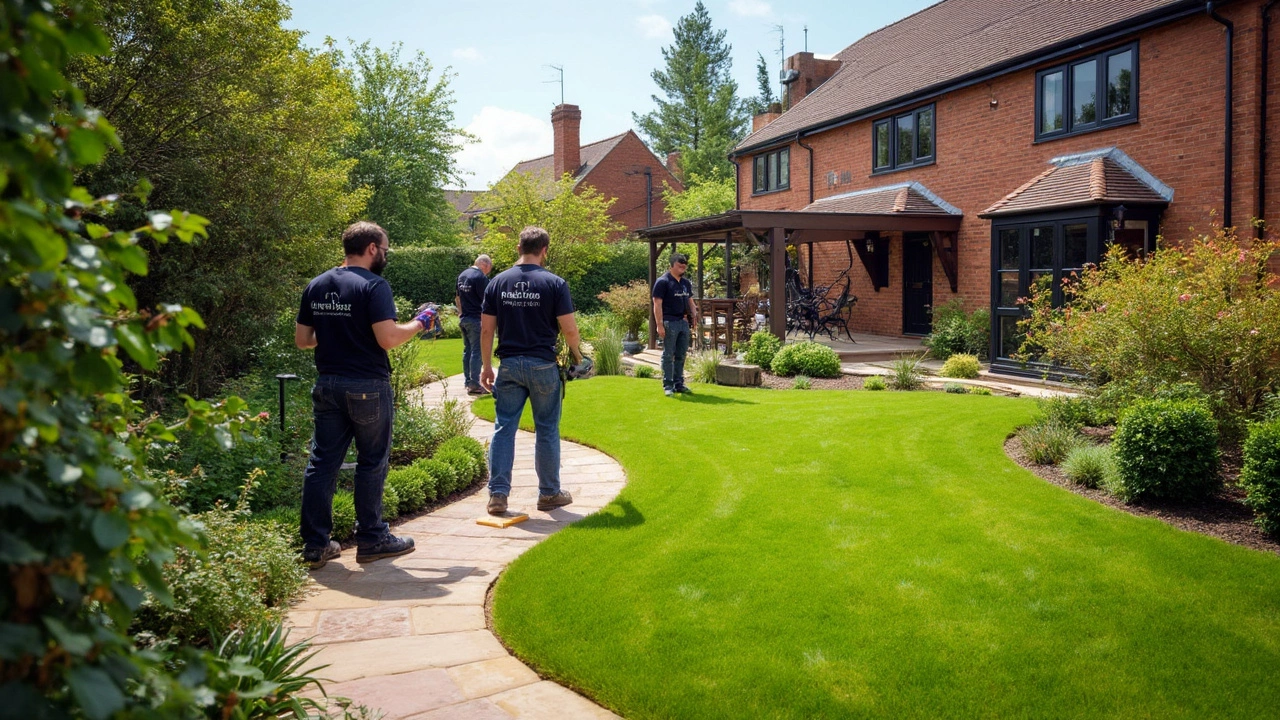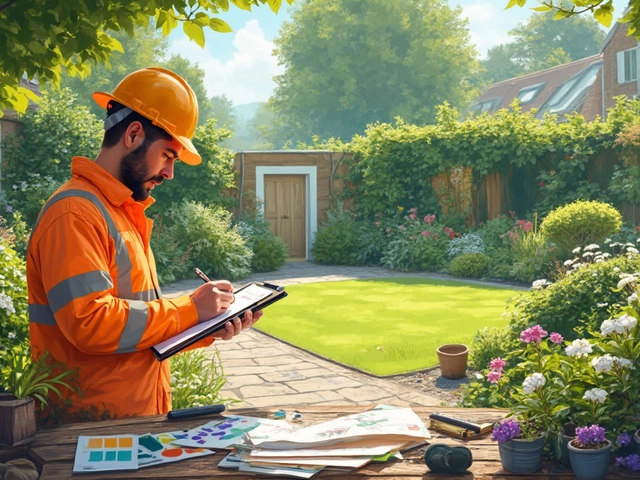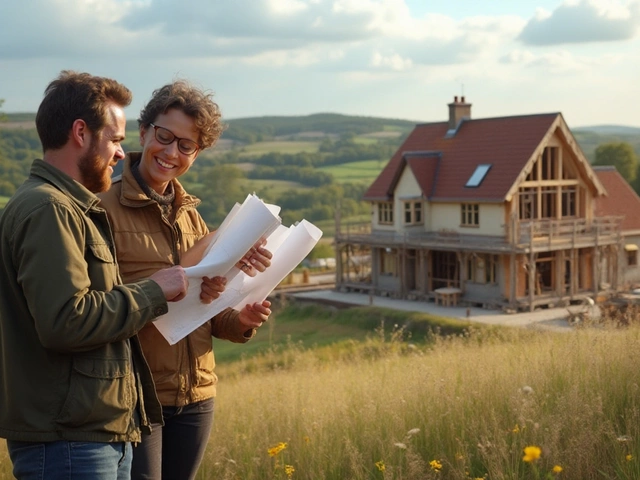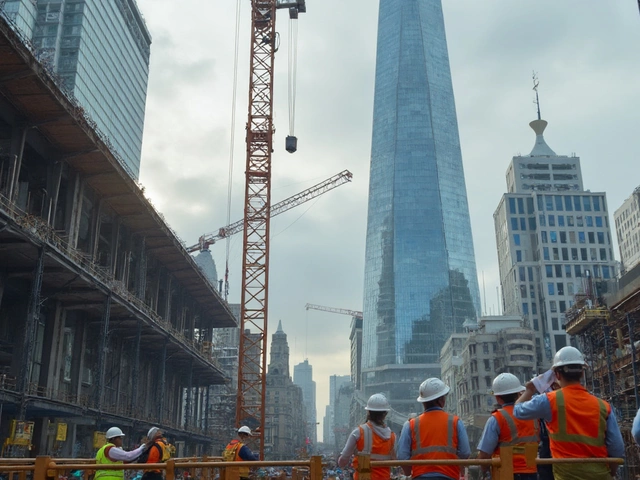Picture a yard that turns heads—lush grass, perfectly shaped bushes, and a stone path that invites you in. Most people just see the result. But behind that Instagram-worthy scene, a landscaper's hands (and sometimes muddy boots) have worked real magic. If you’re thinking a landscaper just mows lawns and plants a few flowers, it’s time for a reality check. The job goes way beyond basic yard chores. These unsung heroes are part-artist, part-engineer, and part-botanist, handling everything from big-picture planning to the gritty details that make outdoor spaces work for families, businesses, and even local wildlife. Ever wondered how much sweat, skill, and science goes into those dreamy backyards and public parks? Buckle up—you’re about to see the outdoor world through a landscaper's eyes.
The Real Scope of a Landscaper’s Job
Landscaping isn’t just about mowing grass or raking leaves, even though that’s all some people notice. The role covers an entire universe of tasks, and a good landscaper is used to wearing a few different hats by the end of the day. Most projects start with talking to the client. That could mean a family who wants a low-maintenance backyard for their kids, or a business dreaming of an eco-friendly front entrance that boosts curb appeal. A landscaper will ask the right questions—how much sunlight the yard gets, what style you like, what the budget really is. They’ll check the soil, survey for drainage problems, and even take note of things like neighborhood wildlife. Once the plan is set, there are sketches, mood boards, and sometimes full-on 3D renderings if the budget and client ask for it.
Next comes the "dirty work," and that’s not an exaggeration. You'll find landscapers digging deep to lay irrigation pipes, moving literal tons of dirt and gravel, and planting everything from tiny ground cover to mature trees. Sometimes, they build hardscape features—think patios, retaining walls, decks, or water features. This means they need to know carpentry, masonry, and how to read site plans almost as well as a builder. Landscapers aren’t just thinking above the surface either. Installing French drains or smart irrigation systems means understanding water flow and soil science so the backyard dream doesn’t become a swamp.
Of course, there’s maintenance, which is what most people associate with landscaping—mowing, trimming, weeding, fertilizing, and pest control. But even these tasks take more skill than most realize. Knowing the best mowing height for different grass types, spotting early signs of insect damage, and choosing the right fertilizer for your soil pH aren’t things you just Google once and forget. There’s a science to keeping landscapes healthy and good-looking all year round, especially with the unpredictable weather swings that have been hitting North America the past few years. And let’s not overlook plant choice. A seasoned landscaper won’t just pick what looks good today; they’ll select perennials that return every year, mix in some evergreens for structure, and maybe throw in native flowering plants to attract pollinators and reduce the need for chemical treatments.
Seasonal needs also keep landscapers busy. Spring is for planting and prepping, summer for irrigation and growth, autumn for mulching and cutting back, and winter for protecting vulnerable plants and prepping for icy weather. Each season comes with its own challenges—like freak late freezes or droughts—that call for a quick-thinking problem-solver. And while most people see landscaping as a "warm weather" gig, many professionals stay busy with snow removal, winter pruning, or prepping for big spring installations as soon as the frost thaws.

What Skills and Tools Set a Good Landscaper Apart?
Forget the stereotype of the guy with a mower and leaf blower. Professional landscapers bring a unique mix of skills you probably don’t expect. Sure, physical strength helps; you’re absolutely going to break a sweat. But there’s a brainy side, too. For starters, plant science is a huge part of the job. Landscapers need to know local climate zones (like how USDA Plant Hardiness Zones help figure out which plants survive your winters), soil chemistry, and how bugs and diseases move through a garden. Plants can look fine one day and suddenly drop dead the next if you don’t recognize signs of trouble fast. In many places, a good landscaper is just as valuable as a horticulturist when it comes to diagnosing plant health.
Then, there’s the design side. Landscapers see a blank lawn as a canvas. They need a sharp eye for shape, texture, and color—whether they’re arranging flower beds for maximum seasonal bloom, blending different shades of green, or building stone paths that don’t just look good but guide people where they want to go. Ever heard of "softscaping" and "hardscaping"? Softscaping is all your plants, grass, and mulch, while hardscaping is stuff like patios, decks, walls, and pathways. The pros juggle both and know how to weave them into seamless, practical, and beautiful spaces.
Let’s talk tools. Advanced landscapers use much more than standard hand tools. There are specialized measuring gadgets for slope and drainage, GPS-guided irrigation system planners, and even battery-powered gear to cut noise and emissions. In fact, electric equipment is one of the fastest-growing trends, thanks to tougher neighborhood noise laws—some cities (like Los Angeles in 2024) banned gas-powered lawn gear to cut air pollution and noise. For big projects, landscapers whip out earth movers, compactors, and even mini-excavators. Knowledge of safe tool use and maintenance is critical, because nothing slows a project down like broken machinery or a trip to the ER.
Communication also matters. Landscapers have to translate their technical know-how into clear ideas clients understand, set realistic timelines, and finesse changes on the fly when homeowners switch up their plans halfway through. Good client relationships are what make the difference between a one-time job and a steady flow of referrals. And, not to brag, but landscaping pros rank high for adaptability. Every job is a puzzle—weather, plant diseases, supply chain hiccups, random customer requests—and there’s no textbook solution. The best in the business are known for solving problems you didn’t even know you had.
There’s also a hidden science behind how outdoor spaces influence mood and lifestyle. Landscapers leverage principles of environmental psychology: the way curved paths make a yard feel bigger, the calming effect of water features, or even how a little shade can turn a hot slab of patio into a favorite family hangout. With the demand for green spaces skyrocketing in urban areas—local governments across the U.S. invested over $5 billion in public parks and greenways in the past three years—landscapers often play a key role in shaping not just private backyards, but community well-being.

Insider Tips and Real-World Advice for Anyone Hiring or Aspiring to Be a Landscaper
Hiring a landscaper? Do yourself a favor: look for someone who asks questions and really listens. A solid pro will want to visit your site before quoting a price. If they don’t get their boots dirty checking your soil, sunlight, and drainage, keep shopping. It’s a big red flag if they promise instant results or give vague timelines. Landscaping done right takes time—plants need to take root, and weather can throw off even the best-laid schedules.
Your budget will stretch further if you’re open to local plants. Native species don’t just survive; they thrive with less water and fertilizer, which cuts down your long-term costs. Ask your landscaper about pollinator gardens, rain gardens, or xeriscaping (landscaping with little or no irrigation)—these aren’t just buzzwords. They’re proven ways to lower maintenance headaches while supporting bees, butterflies, and birds. Plus, they make your yard look alive all season.
If you’re dreaming of a show-stopping yard, don’t underestimate maintenance. Even the prettiest design falls flat if the grass turns brown or weeds take over. Some landscapers offer full-service care—monthly, bi-weekly, or seasonally—so ask upfront if you’re looking for long relationships instead of one-off jobs. Don’t forget to ask about eco-friendly practices, too. No one wants chemical run-off flowing into local creeks, and lots of pros can work wonders with organic fertilizers and pest management. In cities where water is tight, irrigation-smart design might be the most important thing you can request. Drip systems, moisture sensors, and smart timers can drop your water use by up to 50% without sacrificing a green lawn.
If you’re considering a job in landscaping, bring a mix of muscle, creativity, and problem-solving smarts. The industry keeps changing fast. Drones are starting to help with site surveys, and some companies use augmented reality to show clients what their new backyards will look like before a shovel even touches dirt. There’s certification, too—groups like the National Association of Landscape Professionals offer credentials that can really boost your career. Don’t fall for the myth that landscapers are "just gardeners"—the best ones are as skilled as any contractor or designer, and they can earn a healthy living doing what they love outside.
Bottom line: Whether you want to hire a landscaper or roll up your sleeves and become one, understanding all the work that goes into those gorgeous green spaces will make you see your yard (and the people who create them) in a whole new way. There’s an entire world of planning, planting, building, and creativity behind every outdoor space you admire—and now you know exactly what a landscaper actually does.






